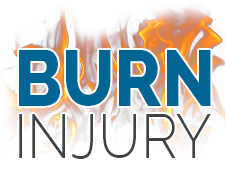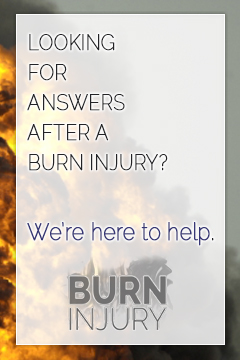Scalding Injuries
Scalding injuries result from exposure to moist heat, such as hot liquids or steam. Typically, scalding injuries of the same heat cause deeper damage than burns from dry heat. Scalding injuries may heal slower and form greater scar tissue than dry heat burns. Scalds are usually considered to be first or second degree burns, but may also be third degree burns in severe cases. Scalding injuries should be treated similarly to other types of burns.
Causes of Scalding Injuries
The majority of scalding injuries are caused by high-temperature tap water from faucets, baths or showers. Hot beverages may also cause scalding injuries, such as spilled hot coffee or soup. The American Burn Association states that 100,000 scalding injuries each year are caused by spilled beverages and food. Steam from cooking or radiators can cause scalding injuries.
Water Temperature
The American Burn Association states that a scalding injury can occur in one second when skin is placed in contact with water measuring 155 degrees Fahrenheit, or 68 degrees Celsius. Burn injuries may occur in two seconds for water measuring 148 degrees Fahrenheit, or 64 degrees Celsius. At 140 degrees Fahrenheit, or 60 degrees Celsius, scalding injuries may occur within five seconds. Scalding injuries can occur within 15 seconds of exposure to water that is 133 degrees Fahrenheit, or 56 degrees Celsius.
Scalding Injury Statistics
According to the American Burn Association, scalding injuries accounted for roughly one-third of all burn injuries requiring burn center treatment in 2012. Roughly 100 deaths per year occur from scalding injuries. The most common victims of scalding injuries are older adults, young children, and individuals with disabilities.
Children and Scalding Injuries
The American Burn Association estimates that roughly 60 percent of all scalding injuries in the U.S. occur in young children. Additionally, roughly 75 percent of all burns in young children are scalding injuries. The Association estimates that nearly 24,000 children per year are given emergency treatment for scalding injuries. Hot tap water scalding injuries account for 5,000 child scalding injuries each year.
Preventing Scalding Injuries
The following tips may help to prevent scalding injuries at home:
- Maintain close supervision over children in the bathroom and kitchen areas
- Ensure that hot liquids are kept safe and away from children
- Test the temperature of hot foods before giving them to children
- Turn put handles toward the stove’s back so that they are less easily reached by children
- Test bath water temperature for several seconds before submerging a child
- Change thermostat settings to heat water to no higher than 125 degrees Fahrenheit
Sources:
“Nonfatal Scald-Related Burns Among Adults Aged =65 Years — United States, 2001–2006.” Morbidity and Mortality Weekly Report. 58.36 (2009): 993-996. Web. 26 Dec. 2013. <http://www.cdc.gov/mmwr/preview/mmwrhtml/mm5836a1.htm>.
Peterson, Lizette, Janet Farmer, and Javad H. Kashani. “Parental Injury Prevention Endeavors: A Function of Health Beliefs?” Health Psychology 9.2 (1990): 177-191. PsycARTICLES. Web. 26 Dec. 2013.
“Scalds: A Burning Issue.” Ameriburn. American Burn Association. Web. 26 Dec 2013. <http://www.ameriburn.org/Preven/2000Prevention/Scald2000PrevetionKit.pdf>.













